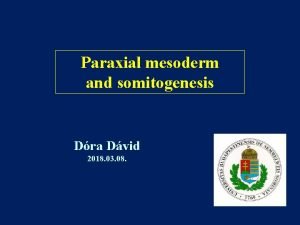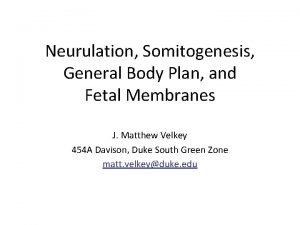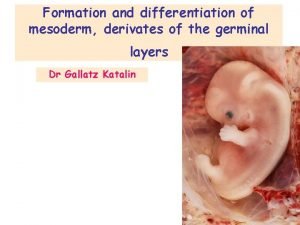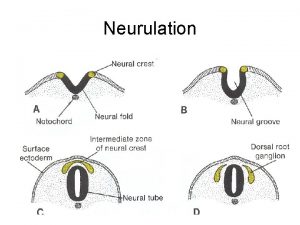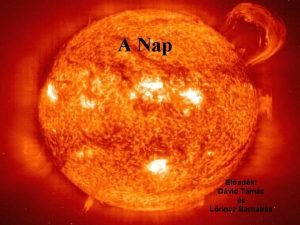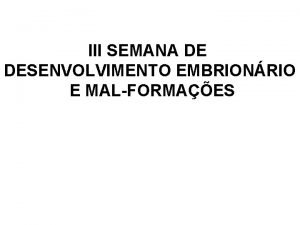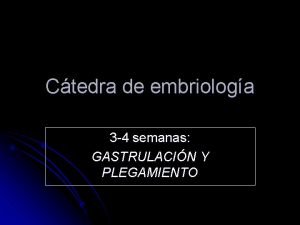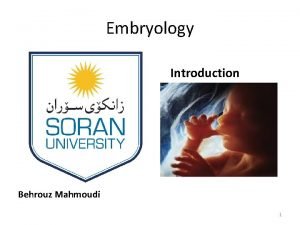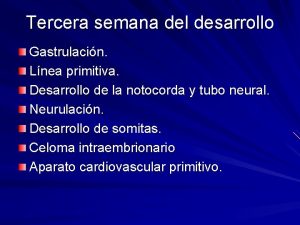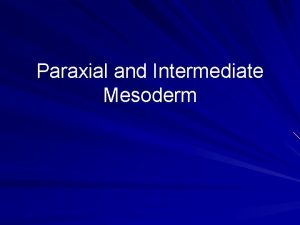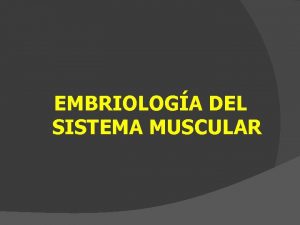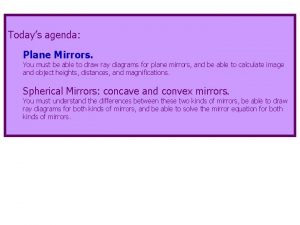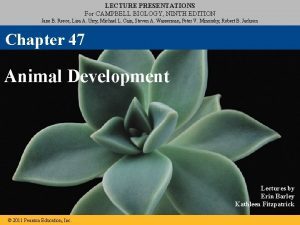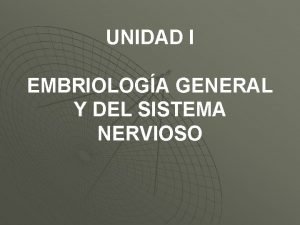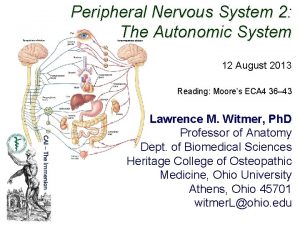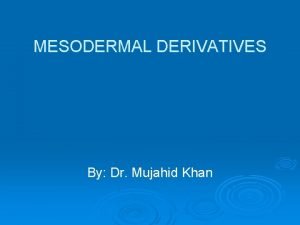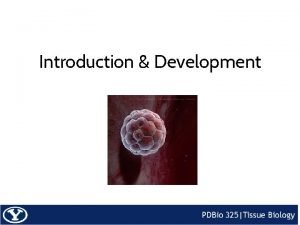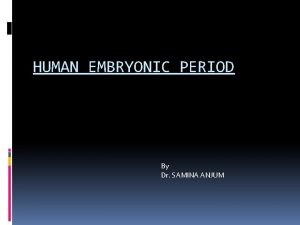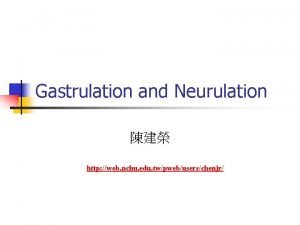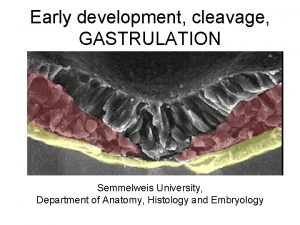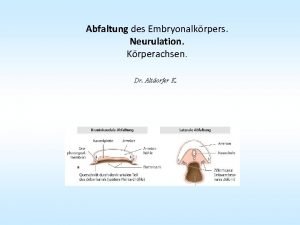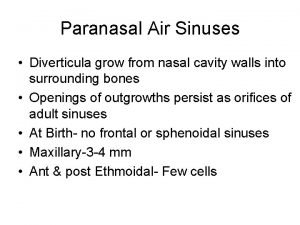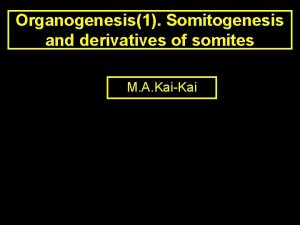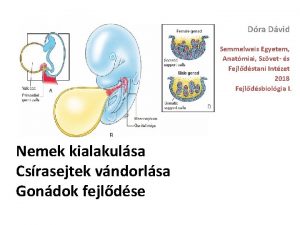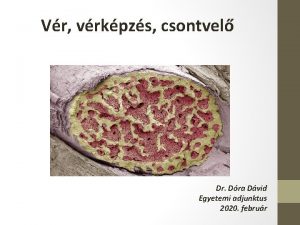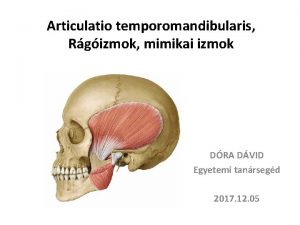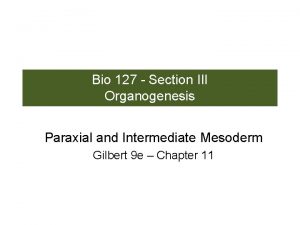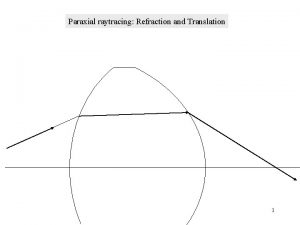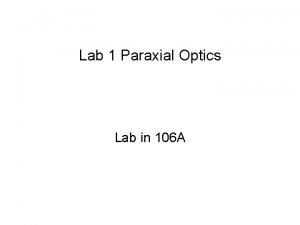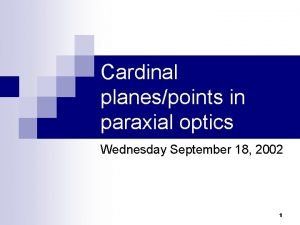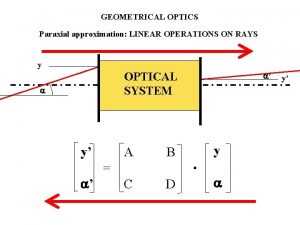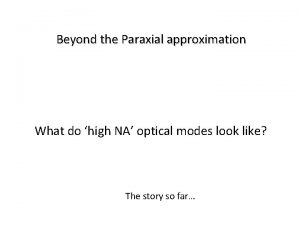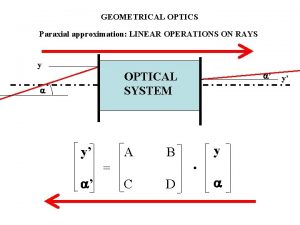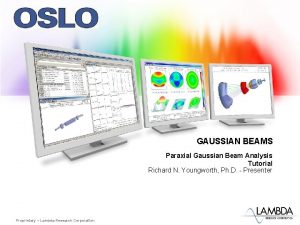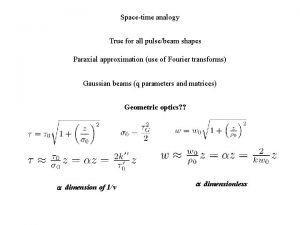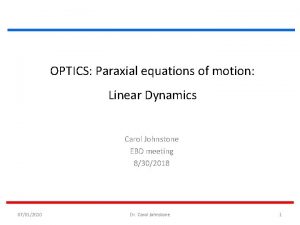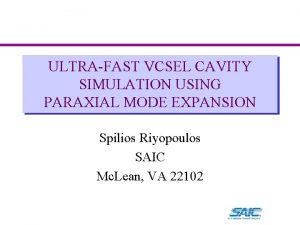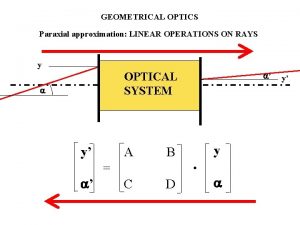Paraxial mesoderm and somitogenesis Dra Dvid 2018 03


























- Slides: 26

Paraxial mesoderm and somitogenesis Dóra Dávid 2018. 03. 08.

Classification of the mesoderm • Cells migrated between ecto and endoderm during gastrulation • 5 types of mesoderm exist chorda mesoderm paraxial mesoderm intermedier mesoderm lateral mesoderm head mesoderm


Somitogenesis somites - Somites are simmetrical, segmental structures appearing in specific timeframes lateral to the neural tube - They originate from paraxial mesoderm -During their differentiation their progenitor cell will form the: vertebrae, ribs, intervertebral discs dermis, hipodermis back, thoracic, abdominal, limb skeletal muscles

Ephrin and its receptor constitute a possible cut site for somite formation cranial Direction of somitogenesis caudal Eph. A 4 • Somitogenesis: repeating sequence of similar morfogenetic events • Cranio-caudal directed process

Humán embrióban 37 -40 somita fejlődik ki Paraxial mesoderm Neural tube somite Paraxial mesoderm

Formation of somites • Shape: like a ball, covered by epithelial cells, inside mesenchyme • One pair of somites form during a species specific time-frame (in chick embryo it is 90 minutes) • They are identical in size.

Clock and Wavefront model • Somites form during preset time-frame, but the 7 cranial somitomer never transform into somites origin of head mesoderm, and of skeletal muscles of head • The time-adjusted cyclical process is depicted by the „Clock and Wavefront” model • Presence of oscillatorically expressing genes in paraxial mesoderm → expression interval of these genes are identical with the time frame of somite formation • FGF 8 (produced by Hensen’s node and tail bud) and retinoic acid (produced by already formed somites) establish an oppository gradient in the cranio-caudal axis of the embryo • FGF 8 and retinoic acid „extinguishing” each other time the expression of „oscillatory genes”

Somitogenesis

Delta-Notch are expressed at presumptive boundaries Ectoderm induction with Wnt-6 will induce the paraxis gene, thus expression changes the mesenchymal somitomer into a epithelial somite

Somites further differenciate after their formation: • Sclerotome • Syndetome • Dermomyotom

Sclerotome: Ventromedial cell group of somites. During multiple mitosis they migrate around the developing neural tube and notochord due to the effect of Shh and noggin, produced by the latters Expression of Pax-1 and Pax-9 begins secondary mesenchyme formation and production of cartilage-specific ECM molecules. Dermomyotome: Effect of ectodermal Wnt secretion differentiate it to two parts: dermatome (close to the ectoderm). Progenitors of dermotome (together with progenitors from the lateral mesoderm) together will establish the layers of dermis and hypodermis The part closer to the neural tube of the dermomyotome will be the myotome. Later it contributes to the development of skeletal muscles of the body wall, limbs and back. Cells of the dermomyotom express Pax-3 and Pax-7 Syndetome: Layer between the sclerotome and dermomyotome. Its cells will differentiate to the precursors of tendocytes

Differentiation of somites noggin

Sclerotome determination Shh signaling from notochord/floor plate Inducing Pax 1 expression

Ventral sclerotome: corpus vertebrae, discus intervertebralis Lateral sclerotome: distal ribs Medial sclerotome (not shown): meninges and vessels (meningotome) Arthrotome: discus intervertebralis, proximal ribs Dorsal sclerotome: dorsal part of arcus vertebrae, processus spinosus Central sclerotome: ventral part of arcus vertebrae, processus transversus

• Sclerotomes will split to a cranial and caudal segment further • The caudal segment is more compacted, the cranial is more loosened • Two neighbouring sclerotome’s caudal and cranial segments will form a vertebra • Motoneurons’ axons from the neural tube just can pass through the loosened cranial segment

Differentiation of sclerotome: Formation of vertebrae caudal cranial

Somites and their sclerotomes are identical but vertebrae are different. . . Explanation is the differential expression of HOX genes and the so called HOX-code

dermamyotom Dermatom epidermis dermatome hypodermis epitheliomesenchymal transmission neurotropin 3 (NT-3) ectoderm Neural tube

dermamyotome Back muscles Myotom Body wall Tongue muscles Limb msucles Progenitors of epimere will form: m. erector spinae and transversospinal muscles (epaxial muscles) Progenitors of hypomere will form: intercostal muscles, m. obliquus externus, m. obliquus internus, m. transversus abdominis and limb muscles Noggin signal from notochord inhibits ectodermal BMP-4, instead of Pax-3 and Pax-7 myogenic factors starts to express, like Myo. D or Myf 5

Migration of myoblasts limb bud Migrating myoblasts BMP-4 from the lateral mesoderm extinguishes the myogenic effect, And cells start to express Pax-3 C-met: tirosine kinase receptor protein appears on the surface of myoblasts, to what HGF (hepatocyte growth factor) binds as a ligand expressed by the limb bud’s mesenchymal cells

Trunk muscles at the level of limb buds epaxial myotome Autochton back musculature no hypaxial myotome Pax-3, HGF/SF, c-met Myogenic cells for limb muscles

Between lim buds Surface ectodern dermatome epaxial myotome autochton hátizomzat sclerotome hypaxial myotome Wolffian duct Abdominal and intercostal muscles

CSIR Chicken limb bud quail chick Quail derived muscle

Development of tendons: expression of sclereaxis gene

 Dermamyotom
Dermamyotom Somitogenesis
Somitogenesis Mesoderma paraxial
Mesoderma paraxial Mesoderm derivatives
Mesoderm derivatives Dvid laid
Dvid laid Dvid
Dvid Dvid
Dvid Mesoderma paraxial
Mesoderma paraxial Mesodermo paraxial y lateral
Mesodermo paraxial y lateral Paraxial
Paraxial Zona paraxial
Zona paraxial Neurulacion
Neurulacion Neurómeras
Neurómeras Paraxial region
Paraxial region Epimero e hipomero
Epimero e hipomero Formation of image of an extended object by a plane mirror
Formation of image of an extended object by a plane mirror B a f c j e
B a f c j e Mesoderm ectoderm and endoderm
Mesoderm ectoderm and endoderm Meningohidroencefalocele
Meningohidroencefalocele Parietal mesoderm
Parietal mesoderm Mesodermal derivatives
Mesodermal derivatives Ectoderm derivatives
Ectoderm derivatives Samina anjum
Samina anjum Neurulation
Neurulation Primitive ridge
Primitive ridge Herzschlauch
Herzschlauch Late fetal period
Late fetal period
